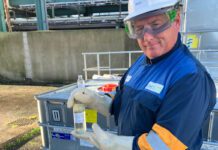
The BPF Pipes Group has launched a new guide for the construction and utility industry to help project managers demonstrate the quality of installed fusion joints and therefore the integrity of their new polyethylene (PE) pipeline system.
Available from the BPF Pipes Group website at www.plasticpipesgroup.com/support-downloads/guidance-notes/ the guide provides a step-by-step approach, based on established non-destructive examination (NDE) and non-destructive testing (NDT) techniques, to providing assurance that good workmanship has been used throughout a project.
The guide Quality Assurance with Electrofusion Jointing is said to offer another piece in the jigsaw towards encouraging utilities to value well-made and leak-free fusion joints in their bid to achieve zero leakage from new pipelines. It builds on the best practice for jointing set out in the recently revised WIS 4-32-08 standard for the fusion jointing of PE80 and PE100 pressure pipeline systems.
The guide considers the fundamental building blocks for a good fusion joint – cleanliness, heat and pressure – and how poor practice in any one of these aspects could lead to a poor joint. Electrofusion jointing is a reliable method of joining PE pipes, and when done properly produces a pipe joint as strong as the original pipe material itself, resilient to corrosion, flexible enough to withstand ground movement and with a long and functional life. Critically, the approach presented by the BPF Pipes Group is said to allow installers to provide evidence they have used reasonable standards of care and attention in making joints without the need to employ specialist imaging techniques which in themselves do not provide complete assurance of joint integrity.
Julia Trew from the BPF Pipes Group emphasised that “the guide offers a practical means to demonstrating integrity of joints on site which complements the updated version of WIS 4-32-08 perfectly.”
Steve Webber, business development manager for infrastructure specialist Murphy’s water team, said: “Murphy installs thousands of metres of PE pipe annually, welding numerous butt fusion and electrofusion joints and we already go through a thorough testing and verification process to inspect all our records. Electrofusion jointing tends to be carried out in difficult conditions within narrow trench excavations, so it’s imperative that our site procedures enable reliable jointing. We and our clients insist on joints being well-made, offering long lifetimes and flexibility to respond to ground movement. We support the BPF Pipes Group guidance document as it will help with on-site quality assurance, giving our clients confidence in the quality and integrity of their new PE pipelines.”






